Rear I/O
The rear I/IO features:- PS2 keyboard and mouse
- Optical and coaxial S/PDIF audio output
- One 6-pin Firewire port
- One 4-pin mini-Firewire port
- Eight USB 2.0 ports
- Two RJ45 Gigabit Ethernet ports
- Six 3.5mm audio jacks for 7.1 channel High-Definition surround sound, including separate microphone and line inputs
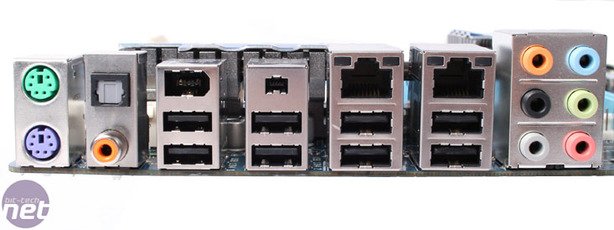
BIOS
Gigabyte's BIOS is, as we've come to expect, packed out with useful bits and bobs. Like virtually every other Gigabyte board, certainly every "UD" branded one, there is a multi-entry, customisable, BIOS profile saving utility on top of the Q-Flash BIOS flashing application built in. Both are extremely useful. In contrast to this, yet again Gigabyte's fan control is pretty abysmal though, with only a single "auto" setting to choose from and whether your fan is PWM or voltage controlled.
Under the MIT section that hides all Gigabyte's overclocking and performance options, the layout is very intuitive and easy to use. Selecting either the CPU, northbridge, memory or HTT ratio/frequency shows up the true frequency to the right hand side, making it far easier to know where all the clocks are. The memory timings are held in a sub-directory out the way to keep the main page neat. In there, we find plenty of memory timing options that also show SPD alternatives, as well as the more relaxed "auto" settings the Gigabyte BIOS suggests. This helps greatly because usually only the first four SPD settings are shown on the memory sticks, but usually BIOSes ignore the rest or they are left at the slower, Auto settings.
Back on the main page, and after all the positive above, the voltages are a let down. Not only are there bundled voltages like NB/PCIe/PLL or SB/HT, but the voltage options are coarse and certainly don't travel very high - for example the NB/PCIe/PLL voltage is capped out at just 2.1V and only has three steppings. Gigabyte still insists on using the + voltages for CPU and CPU-NB as well, which is highly frustrating, despite having the "normal CPU vCore" underneath it doesn't afford ease of use. Despite all the good work elsewhere, we believe this area is where the Gigabyte lacks most and limits the potential.

MSI MPG Velox 100R Chassis Review
October 14 2021 | 15:04



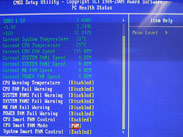
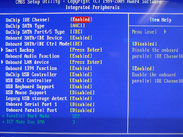
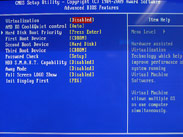

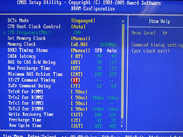

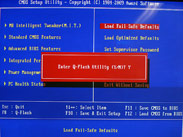







Want to comment? Please log in.